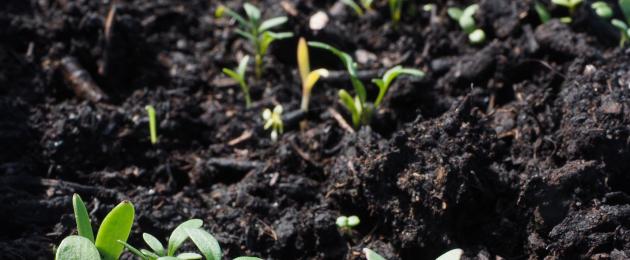Any organic matter can be useful for feeding plants, especially indoor plants, the soil under which is rarely renewed. You should not throw away the drunk tea and coffee grounds... There are not many trace elements for nutrition in tea leaves, but they are. Also, organic residues contribute to the multiplication of soil microorganisms that produce humus. Salts of humic acid are able to stimulate basic biological processes - growth, flowering, fruiting.
Nutritional characteristics of the brew
Tea leaves can be used as fertilizer in the country or for indoor plants. due to the content of the following mineral components in the sheets:
- Potassium- tea leaves accumulate it in large quantities. Something remains after brewing and may be beneficial. Without potassium, ornamental crops bloom poorly or do not set buds at all. Now they have come up with a business on berry and citrus dwarf trees that can be grown on a windowsill. Sleep tea will be a good potash fertilizer for them.
- Metabolic processes are affected calcium. In terms of quantity, it is in second place.
- Magnesium free the leaf plate is not capable of accumulating chlorophyll. Cacti love calcium, so you can add waste to the soil once a year.
- Manganese- promotes the restoration and growth of the root system, and also promotes the absorption of nitrogen. The appearance of a plant largely depends on this microelement.
- Iron prevents chlorosis. In some cases, the reason for the yellowing of the leaves is not a nitrogen deficiency, but a lack of iron in the soil.
- Sodium accelerates growth due to the activation of plant phytohormones. If the culture grows poorly, most likely it lacks biologically active substances.
In the soil, plant organic matter is gradually processed by soil bacteria. As a result of fermentation in the digestive tract of microorganisms, humus enters the soil.

This substance is a growth stimulant and a biological activator of immunity. Thanks to him, the appearance of crops is improved.
Impact on the soil
If you use sleeping tea as a fertilizer for a vegetable garden or indoor ornamental plants, then the soil wins first. Dry tea leaves absorb water and hold it in place, preventing it from evaporating. Thus, crops can go longer without watering.
The waste can be used as a leavening agent to get more oxygen to the roots. Organic matter always has a good effect on the chemical composition of the soil, since nutrients are supplied regularly, as they break down into microelements. Their number is small, therefore, it is impossible to harm the plants or overdo it with such fertilizer.
Video: Eco-fertilizers from tea and coffee
It is difficult to grow seedlings on clay soil because the root system cannot break through the heavy composition. If you mix clay with crushed tea leaves, it will become lighter and the roots will grow faster. The second method is to add tea leaves as fertilizer to each well.
When a white bloom appears on the surface of the soil, you need to mix the top layer with tea waste, and they will absorb excess salt. This happens if you use only mineral fertilizers for a long time.
What are the ways to make tea leaves
You can use black tea or green tea leaves. The content of trace elements is approximately the same. Green tea has more antioxidants, so you can't brew too often - this can destroy the plant. Their highest content is in white and yellow tea.

Fruit species in which flavors and dyes are present are undesirable. These substances have a bad effect on plants, especially on weakened ones.

Sugar added to tea leaves can cause gnats to appear near plants, so it is best to dry them. This will also prevent mold from growing in the pot.
Organic matter is introduced into the soil with any mineral or organic fertilizers - ash, manure, compost, complex mixtures. There is nothing in its composition that could affect the assimilation of certain components. It is believed that tannins are capable of acidifying the soil. This is true for small volumes of potted soil, but in the garden, the amount of tea drunk will not affect the acid-base balance in any way.
Composting
Food waste is added to the compost heap for decomposition. The amount of tea brewing in comparison with all other components will be negligible, but if you add kitchen waste, milk residues and whey, vegetable peelings here, then the volume of compost will increase significantly.

Re-brewing
Tea infusion as a fertilizer can be used in liquid form. To do this, you need to brew it again, cool it and water the plants like ordinary water. A glass of dry leaves can be infused in a three-liter jar until the color appears, and then used to water seedlings or indoor flowers.
Mulching
In an apartment where the heating is turned on in winter, it is recommended to mulch potted soil with sleeping tea to reduce evaporation. For this, a layer of dry leaves 0.5 cm thick mixed with the top layer of soil. It is better to pour water for irrigation into the pan, and moisten the top with a spray bottle. This way the roots will not rot.
When it makes sense to collect tea leaves
Few will pick and dry tea leaves to bury them in the ground. But in some cases, this activity makes sense. For example, if you work in a cafe and bring large volumes home every day. Then per square meter you can add 0.5 kg of waste.
The use of dormant tea as a fertilizer can be heard everywhere, although opinions are divided on this matter. Let's try to understand the current situation.
Experienced neighbors often recommend for beginners gardeners and truck farmers to pay attention to drunk tea. It is believed that flowers, vegetables and berries can grow several times larger if, from spring to late autumn, it is introduced into the soil.
In subsidiary farms, dormant tea is used as mulch and poured under various plants. However, for this, during the winter period it is necessary to collect a sufficient amount of used tea leaves, and this is the biggest difficulty.
Remember that mulching is the surface of the soil with a layer of mulch to improve its properties, using organic fertilizers and a variety of materials. widely distributed in most countries of the world.
Mulch fights weeds: a 5 cm layer reduces weed growth several times. Weeds don't get enough light under the material and die.
 Mulching reduces the evaporation of moisture from the soil, and its top layer remains loose. In heat and drought, mulch protects plants from death: it prevents the topsoil from overheating. Mulching is also used in autumn to protect the soil from weathering and freezing. Mulching is one of the most effective ways to maintain plant health.
Mulching reduces the evaporation of moisture from the soil, and its top layer remains loose. In heat and drought, mulch protects plants from death: it prevents the topsoil from overheating. Mulching is also used in autumn to protect the soil from weathering and freezing. Mulching is one of the most effective ways to maintain plant health.
As an organic mulch, in addition to sleeping tea, hay, straw, leaves, bark, decomposed compost, as well as paper and cardboard are used. Inorganic mulch is also used: stone, gravel, sand. We do not recommend using rubber and plastic, as check them chemical composition almost impossible. Recently, nonwovens have also been used.
However, it must be remembered that sleeping tea as mulch attracts insects, worms and birds, which use it for food.
Of course, it is necessary to add dormant tea when planting street flowers, placing it on the bottom of the pot, on the drain. The rotten tea leaves give the plants additional nutrition. Rose bushes also like to feed from sleeping tea, including diluted with water. Ferns, on the other hand, need it very much. The only thing to remember the brew used as fertilizer must NOT be sweetened... The sweet tea leaves will lure ants and various insects that do not benefit the plants.
Sleep tea has many useful properties... So, for example, tannins are present in the tea leaf, which are necessary for the full development of plants. These substances are acidic in nature and have the remarkable property of reducing the tendency to decay. Using it for its intended purpose, you will undoubtedly be satisfied with the results.
The benefits of sleeping tea as a fertilizer is also indicated by the fact that it makes the soil, especially clayey, lighter. When added to the sand, it enriches the soil like a plant residue. In addition, plant waste retains moisture well in the sand. The advantage of sleeping tea is the neutralization of alkaline soil. The downside is the creation of favorable conditions for the catastrophic reproduction of soil flies, although this applies mainly to pot crops.
However, many gardeners and gardeners consider drunk tea to be a neutral substance that does not carry either benefit or harm. And it is believed that dormant tea cannot be called fertilizer in the full sense. This is just an additive, a filler of the soil, its baking powder.
Use tea leaves as a fertilizer as an infusion (1 glass of dry used tea leaves for 3 liters of boiling water). Gladioli, tomatoes, beans, cucumbers respond well to dry drunk tea - add to the holes just before planting. Before sowing seeds, the soil is fertilized with tea at the rate of 500 g per 1 sq. M.
So, drinking tea causes controversy among gardeners. We have given all the pros and cons and encourage you to experiment, observe and share with us the results of your own experiences.
What folk remedies are not used by gardeners, summer residents and flower growers to increase soil fertility and in order to improve the growth and development of plants.
Ash, eggshells, yeast, succinic acid, banana peels, and other foods are used.
But today we will talk with you about how dormant tea and tea leaves are used as fertilizer.
Considering that this product is simply thrown away after use, the use of dormant tea as fertilizer is very beneficial.
Opinions about the benefits and effectiveness of this remedy sometimes differ, there are both supporters and opponents of this use of tea leaves. Therefore, it is important to understand this issue in detail.
Before understanding whether it can be useful for plants, it is necessary to analyze its chemical composition.
So, the following elements are included in the chemical composition of the tea:
- Potassium - the tea leaf contains 17.9 mg / g. This element is especially necessary for plants, along with nitrogen and phosphorus. With a lack of this element, the leaves sag, their color becomes more intense and acquires a bluish tint.
- Calcium - its content in tea leaves is 4.7 mg / g. The element is an irreplaceable participant in metabolic processes in plants. Fruit stone fruit especially need this element, and this calcium is also important for the development of the root system of plants.
- Magnesium (2.2 mg / g) is an irreplaceable participant in photosynthesis. With a lack of magnesium in the soil, the leaves begin to turn yellow at the edges.
- Iron in tea leaves contains 0.2 mg / g. A lack of this element in the soil threatens plant chlorosis, although this disease may be caused not so much by the absence of this element as by its presence in forms inaccessible to plants.
They are present in tea leaves in insignificant amounts, which do not affect the development of plants and other elements.

Of the trace elements contained in tea leaves are aluminum, manganese, sulfur, boron, barium and others.
It should be borne in mind that already in the used tea leaves the content of useful minerals may be less than the declared one.
Sleeping tea leaves, as a fertilizer, serve as organic matter, the introduction of which always has a beneficial effect on the soil.
How to use correctly
It is preferable to use leftovers from large or medium leaf teas. Artificial colors are sometimes added to tea bags, which can negatively affect plants.
It is also undesirable to use teas with various flavors and other inclusions for this purpose, all this can inhibit the growth and development of crops.
Of course, you need to know when to stop in everything. In large quantities, tea leaves applied under indoor potted plants cause moldy soil and aids in the breeding of sciarids, small black flies.
Therefore, tea leaves, as a fertilizer for flowers, must be dried before use. For open ground, it is also possible to add a wet substance.

In addition, the tea leaves contain tannins, which can increase the acidity of the soil. Therefore, for domestic potted plants, such fertilizer should be used with caution, observing the condition of the flowers.
When using sleeping tea and brewing to fertilize the soil in the garden and vegetable garden, the acidification effect is almost imperceptible.
- A good result is obtained by the simultaneous introduction of wood ash and tea leaves. The soil is enriched simultaneously with calcium, potassium, phosphorus. Wood ash neutralizes the acidic properties of the welding.
- Watering plants with sweet tea must be very careful, given that its concentration for watering should not exceed a proportion of 10: 1000, or 1 tbsp. a spoonful of sugar per liter of water or tea. It is better to supplement such feeding with biological products "Baikal EM1" or "Vostok EM1", otherwise the development of root rot and mold is possible, and in the open ground the appearance of ants is also possible.
But there are plants that react very positively to soil acidification. For example, flowers - azalea, viola, panicle hydrangea, lupine, badan and many others.
From vegetables - sorrel, pumpkin, carrots, radish, cucumbers ... For them, feeding with tea leaves will only be beneficial.
During the winter, the tea leaves are collected, immediately dried and stored until spring in any container, for example, in a bucket.
In the spring, before digging up the soil, the dry tea leaves are poured out in a thin layer and dug up. Or, in the same way, the tea leaves accumulated over the summer can be added under the main autumn processing. This technique will enrich the soil with potassium, calcium and magnesium, as well as improve the structure of the soil.
The approximate rate of application per square meter is half a kilogram.
- You can carry out root feeding of plants with infusion of sleeping tea. For this, one glass of used tea leaves is poured with three liters of hot boiled water and insisted for several hours. Water the plants with this solution under the root like ordinary water.
What does fertilization with infusion help from?
The tea leaves are used as a top dressing for complex potash fertilizers, with an additional content of calcium, magnesium and iron.
It serves as an excellent loosening agent of the soil, improves the structure of heavy soils, due to the introduction of tea leaves and sleeping tea, the soil allows water and air to pass through better.

To use better dried used tea leaves, it acts like a mulch layer, which in the process of decomposition will enrich the soil with useful nutrients.
It will perfectly help to retain moisture in pots of indoor plants during the heating season in winter, with dry air. A good effect is obtained from the use of tea leaves as a drainage component when transplanting indoor plants.
It can be added to the compost heap, it will accelerate the overheating of the mass, and will be an excellent component for future compost.
The use of tea leaves can serve as an excellent fertilizer for plants, contributes to the enrichment of the soil with nutrients, improves its structure and, if used correctly, normalizes the acid balance.
But it is worth noting that you cannot use it on all soils in a row, and put it literally under all the plants. Just like, one drug cannot be a panacea for all diseases.
Therefore, using any fertilizer, it is necessary to focus on the needs of plants and take into account the composition of the soil and its structure.
Tea brewing as a fertilizer is a long-standing method for infusing minerals and nutrients. It can be used for both indoor and garden plants. The benefits of such feeding are provided by its rich composition:
- Potassium. It is necessary when ripening fruits in large volumes;
- Calcium. Provides carbohydrate and protein metabolism;
- Magnesium. Is the main component of photosynthesis;
- Manganese. Participates in redox processes, promotes the formation of the root system, an increase in the vegetative mass;
- Sodium. Transports sugar;
- Iron. It is a component of respiratory enzymes.
Tea brewing is an affordable way of plant nutrition.
Application
It is recommended to use tea with large leaves as a fertilizer. The leaf should be intact, as this helps to preserve the nutritional composition. The richest in minerals is the composition on water, not dried tea leaves. The composition in dried form can be used as a micronutrient fertilizer. Application assumes compliance with the following recommendations:
- The composition acidifies the soil, and therefore it should be used with caution for indoor plants;
- It is recommended to mix it with earth. This makes it lighter, more airtight, waterproof;
- When using, it is recommended to check for artificial colors. They can impair the development of plants;
- If these are home plants, dried used tea leaves are better suited, since the water composition can lead to the appearance of pathogenic microflora, midges;
- The used tea leaves should not contain sugar, as this has a bad effect on the root system, leads to a stop in its development and death.
It is used in several ways:
- If it is outdoors, tea may be preferred after initial use. You don't have to dry it;
- In the off-season, it is better to choose a dried composition. Together with him, the soil is processed, it is dug up;
- If this is a seedling planting, you can pour tea into each hole.
To nourish the root system, it is recommended to take tea and pour it with three liters of boiling water, wait until it cools. The solution ensures fast delivery of all the necessary nutrients. Such a solution is not oversaturated with components, and therefore it is used as a liquid for irrigation. Plants will not be harmed.
Where to apply the infusion?
Where to apply this component? It is favorable for growing ferns, tomatoes, potatoes, beans, cucumbers. More suitable for open ground. For greenhouses, it is better to choose formulations with a lower content of active elements. This is, first of all, an addition to feeding. Therefore, it must be supplemented with other fertilizers. It is a safe formulation with a low concentration of active ingredients. It is relevant for the preparation of compost heaps, mulching, loosening. With it, the soil becomes more airy, fertile. He is able to make even clay soil light. Tea contains tannins, which are essential for development. They also prevent putrefaction, retain moisture in the earth, and also neutralize alkaline soil. However, when added to houseplants, it is possible for soil flies to breed. When added to the compost heap component, it is able to accelerate the decay processes. This is a completely natural product that has no artificial ingredients. For high-quality feeding, you need to choose large and high-quality sheets. This will provide a higher nutritional content.
Recently, against the background of the popularity of everything natural: food, cosmetics and medicines, natural improvised methods of fertilizing the soil have become especially relevant.
Many people use drunk coffee, eggshells, and even tea leaves as a soil fertilization. But is it useful for indoor flowers? And how to use it correctly?
How to fertilize soil with tea
Tea brewing, no matter what kind of tea - green, black or herbal, can make the soil looser and "airy". It perfectly neutralizes alkaline soils, restoring the required acidity level.
Tea brewing is successfully used by gardeners not only for fertilizing the soil of indoor plants, but also on their personal plot.
But there are also nuances of using this method of caring for flowers. If there are black flies or small mushroom mosquitoes in the soil, as well as their larvae, watering with tea sharply accelerates the process of their reproduction. The use of sour, dormant or even standing tea for watering plants provokes the development and growth of a huge number of bacteria. In this case, instead of benefit, this fertilizer will cause significant harm and can provoke the death of the flower.
Therefore, be sure to use freshly brewed tea without sugar at room temperature for watering. Do not flood the plants; stick to the same infusion irrigation regime as with water. It was found that if the above nuances are observed, thanks to this organic fertilizer, plants begin to grow faster.
There is another way to fertilize the soil with tea. Before planting a flower in a bowl, the flower soil or soil is thoroughly mixed with dry tea leaves, and then the plant is planted in the prepared composition. Another option for using tea when transplanting a plant is laying out the sleeping tea leaves on a layer of expanded clay. Soil is poured on top and a flower is planted in it.
500 g of tea leaves per 1 square meter of soil is applied to fertilize the soil before sowing seeds.
Some growers mix a small amount of dormant tea with the topsoil in a flower pot. Due to this, moisture remains in the soil longer, and the plants have to be watered twice less often.
Do not forget that the main thing is the measure. Too much of any fertilizer is just as dangerous as not enough.
- In contact with 0
- Google+ 0
- OK 0
- Facebook 0







